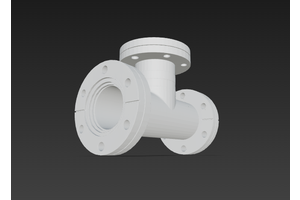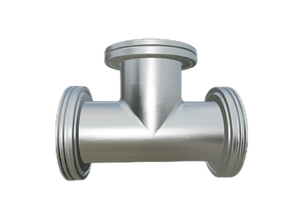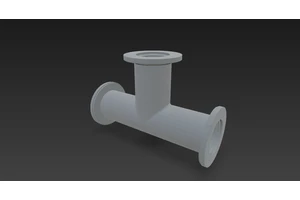Applications of Vacuum Technology in Accelerators and Controlled Nuclear Fusion
Vacuum technology plays a vital role in both particle accelerators and controlled nuclear fusion systems, ensuring the stability, efficiency, and safety of these advanced scientific devices.
1. Vacuum in Particle Accelerators
A particle accelerator is a device designed to accelerate particles to extremely high energies. These particles — such as electrons, protons, deuterons, alpha particles, and other heavy ions — are used in fundamental research as well as in medical, industrial, agricultural, and food-processing applications.
Through interactions between accelerated particles and matter, accelerators can also produce a wide range of secondary charged and neutral particles, including gamma rays, neutrons, mesons, hyperons, and antiparticles.
To ensure the particles travel in a straight path without scattering due to collisions with residual gas molecules, the accelerator chamber must maintain an extremely high vacuum. If the vacuum level is insufficient, the following problems may occur:
-
Beam losses, reducing efficiency.
-
Inability of particles to reach the desired high energy.
-
Electrical breakdown due to inadequate vacuum insulation, leading to system failure.
Table 1 shows typical accelerator types and their required vacuum levels:
| Accelerator Type | Required Vacuum Range (Pa) |
|---|---|
| Electrostatic Accelerator | 1.3 × 10⁻³ ~ 1.3 × 10⁻⁴ |
| Linear Accelerator | 1.3 × 10⁻³ ~ 1.3 × 10⁻⁶ |
| Cyclotron | 1.3 × 10⁻⁴ ~ 1.3 × 10⁻⁴ |
| Electron–Positron Storage Ring (Italy) | 1.3 × 10⁻⁷ |
| Proton Storage Ring (CERN, Europe/USA) | 1.3 × 10⁻⁹ |
| High-Energy Superconducting Storage Accelerator (USA) | 1.3 × 10⁻¹⁰ |
Maintaining these vacuum levels is crucial for stable accelerator operation and optimal experimental results.
2. Vacuum in Controlled Nuclear Fusion
With the depletion of global oil reserves and increasing environmental concerns, the development of new energy sources has become urgent. Controlled nuclear fusion is one of the most promising solutions, capable of producing immense amounts of clean energy.
There are two main nuclear energy approaches:
-
Nuclear Fission — Splitting a heavy atomic nucleus into two lighter nuclei, releasing vast amounts of energy, which is used in nuclear power plants.
-
Nuclear Fusion — Combining two light atomic nuclei (such as deuterium and tritium) into a heavier nucleus, releasing tremendous energy. Controlled nuclear fusion involves maintaining and regulating this reaction for practical energy production.
The raw materials for fusion — deuterium and tritium — can be extracted from seawater, making this energy source virtually limitless.
However, nuclear fusion requires extremely high temperatures, approximately 200 million degrees Celsius, achievable naturally only inside stars like the Sun. Any impurities in the deuterium-tritium fuel can prevent reaching such temperatures. Therefore, it is essential to maintain an ultra-clean, ultra-high vacuum inside the fusion device before initiating the reaction.
Typically, controlled nuclear fusion systems require a vacuum level in the range of 10⁻⁷ to 10⁻⁹ Pa, ensuring that plasma purity and reaction efficiency are not compromised.
Conclusion
From enabling the precise acceleration of particles to ensuring the extreme environmental conditions necessary for nuclear fusion, vacuum technology is an indispensable part of modern high-energy physics and advanced energy research. As scientific and industrial applications of accelerators and fusion reactors expand, the demand for ultra-high vacuum systems will only continue to grow.





